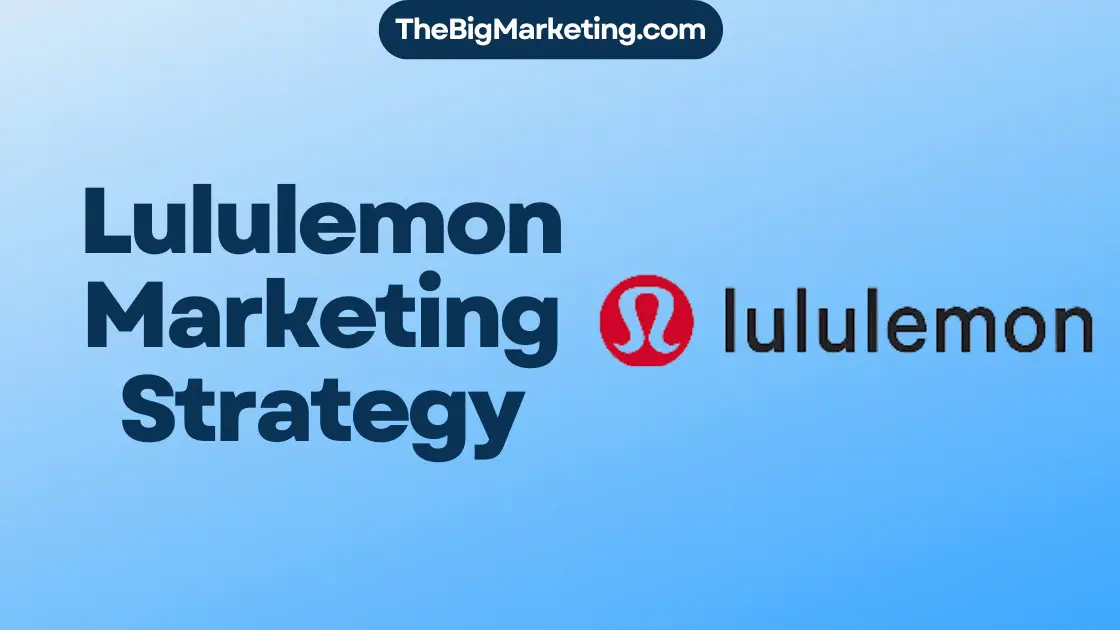A marketing vertical targets a specific niche of interconnected companies and customers. It caters to unique needs with its business standards. In a vertical market, companies become experts in trends, terms, and rules.
They offer insights and services tailored to that market. Focusing on one market vertical, businesses make more profit. They do this by reaching a specific group of customers and using cost-efficient marketing.
Key Takeaways:
- Marketing verticals refer to specific niche markets that consist of interconnected companies and customers.
- Vertical markets have specialized needs and their own set of business standards.
- Companies operating in vertical markets gain expertise in market trends, terminology, and regulations.
- Focusing on a specific market vertical can lead to higher profits through a narrower customer base and more cost-effective marketing campaigns.
- By specializing in a vertical market, businesses can provide targeted insights and specialized services to their customers.
What is a Vertical Market?
A vertical market is also known as a niche market. It focuses on a specific industry or market segment. Companies in this market aim to meet the unique needs of businesses within it.
These markets are known for their industry-specific focus. They understand the unique needs, trends, and rules of their market. This deep knowledge gives companies an edge and lets them offer targeted insights and services.
Getting into a vertical market can be tough due to high barriers to entry. But once in, businesses face less competition and enjoy a focused group of customers.
There are several benefits for businesses in vertical markets:
1. Expertise and Specialization
- Companies gain deep knowledge in their specific field.
- They get to know the unique challenges and trends their customers face.
- This allows them to offer products or services tailored to specific needs.
2. Targeted Audience
- They have a clear target audience in their industry.
- Marketing strategies and messages can be directly aimed at their niche.
- This focused approach often brings higher conversion rates and loyalty.
3. Higher Profits
- Businesses can streamline operations focusing on one market.
- They can charge more for their unique offerings.
- With fewer customers, marketing can be more cost-effective, raising profits.
Operating in a vertical market makes businesses stand out as industry experts. Companies are able to customize their products or services and gain a competitive advantage. Those who understand their vertical market well can lead their industry.
Advantages of a Vertical Market
Working in a vertical market comes with several perks for companies. One perk is the chance to focus on a particular group where they are strong. By narrowing in on a vertical market, companies can adjust their products or services to meet special needs of their niche. This focused effort helps businesses become trusted industry leaders.
Getting to know a vertical market inside-out also has its rewards. As companies dive deeper into a specific vertical, they learn more about its trends, language, and rules. This deep understanding makes them stand out, allowing them to offer tailored solutions efficiently.
Another benefit is smarter marketing that doesn’t break the bank. Companies in vertical markets target a smaller group of customers. This means they can craft marketing messages that hit home with their audience. Such customized marketing is not only cost-effective; it helps bring in higher profits for businesses focused on vertical markets.
Advantages of a Vertical Market:
- Targeting a specific segment with a comparative advantage.
- Becoming an expert in the market’s trends, terminology, and regulations.
- Cost-effective marketing campaigns through a focused approach.
- Higher profits through specialized services.
| Advantage | Description |
|---|---|
| Targeted Market | Operating in a vertical market allows businesses to focus on a specific segment where they have a comparative advantage. |
| Expertise | Companies in vertical markets gain expertise in the market’s trends, terminology, and regulations, making them more competitive. |
| Cost-effective Marketing | Vertical market businesses benefit from cost-effective marketing campaigns since they have a narrower customer base. |
| Higher Profits | Specializing in a vertical market and providing specialized services can lead to higher profits. |
Understanding a Vertical Market
Vertical market businesses aren’t like those in a horizontal market. They focus on a specific industry or group of people. This focus means they often use a different strategy. Their narrow target has distinct characteristics and needs.
Working in a vertical market offers benefits over a wider, horizontal market. It allows businesses to specialize in a certain area. They also gain deep knowledge about market trends, terms, and rules.
Vertical market companies serve a particular industry or group. By focusing narrowly, they can truly understand their market. They then tailor their offerings to meet their audience’s needs.
Advantages of Operating in a Vertical Market
There are several benefits to working in a vertical market:
- Specialization: Businesses can become experts in their field. By zeroing in on a niche, they build deep expertise. This know-how raises their credibility and sets them apart from rivals.
- Industry-Specific Solutions: Vertical market businesses offer solutions designed for their target industry or group. These tailored solutions better address the unique problems and needs of their audience.
- Demographic-Specific Marketing: They can also create highly focused marketing campaigns. Understanding their target group allows for messages that truly resonate, improving marketing success and conversions.
- Regulatory Knowledge: These companies often face specific regulations. By concentrating on a niche, they master these rules and ensure their offerings comply. This knowledge builds customer trust and distinguishes them from competitors.
A strategic approach in a vertical market helps businesses use their sector-specific skill. They can provide specialized services, craft targeted marketing, and keep up with regulations. Operating this way offers many advantages for businesses aiming to lead their industries.
Real World Example
A good example of vertical markets can be seen in grocery stores. Different types of markets aim at specific groups of customers. Walmart serves a broad audience, making it a part of the horizontal market. Whole Foods, on the other hand, is focused on the organic grocery market.
In the grocery sector, there are various segments. These include conventional stores, specialty health shops, and online delivery services. Each has its own target customers and special products.
Often, industries have multiple vertical markets that may share some aspects. This approach lets companies reach diverse customers in the larger sector.
The car industry is another place where vertical markets are found. It has segments like luxury cars, electric vehicles, and commercial trucks. Although there’s some sharing of suppliers and tech, each segment has its own customer base.
The table below shows how different grocery verticals overlap yet concentrate on specific customer needs:
| Market Vertical | Description |
|---|---|
| Conventional Grocery Stores | Retail stores offering a wide selection for everyone. |
| Organic Grocery Stores | These stores provide organic and natural foods for those focusing on health. |
| Online Grocery Delivery Services | These services let customers order groceries online for home delivery. |
| Specialty Food Stores | Shops offering unique foods like gourmet or ethnic products. |
The table highlights each grocery vertical’s focus and audience. While there is overlap, each targets a particular segment with specific products and services.
Grasping the idea of market verticals is key for any business. It helps in pinpointing the target market, customizing offerings, and crafting strategies to grab market share.
What is a Vertical?
A vertical, also known as a sales vertical or vertical market, is aimed at a specific industry. It’s where a company’s products or services find their main audience. For instance, automotive, education, manufacturing, and real estate are some areas companies might focus on. Unlike broad markets that serve many sectors, verticals meet the unique needs of one sector.
Examples of Verticals:
- Automotive
- Education
- Manufacturing
- Real Estate
| Vertical | Description |
|---|---|
| Automotive | This is all about vehicles, including making, selling, and keeping them running. |
| Education | It focuses on schools, learning materials, and educational services. |
| Manufacturing | This area is all about creating goods across different fields. |
| Real Estate | This market deals with buying, selling, and renting out properties. |
Vertical vs. Horizontal Markets
In business, two main market types exist: vertical and horizontal. Understanding their differences is essential for strategic positioning.
Vertical Markets:
Vertical markets focus on specific products and services for a niche. Companies in these markets meet the unique needs of a specialized customer base. They face less competition by being niche experts.
Yet, they are more affected by demand changes in their speciality.
Horizontal Markets:
Horizontal markets offer a broad range of products and services to various customers and industries. These companies benefit from serving a wider customer base. This reduces their risk from niche market demand shifts.
However, they face more competition, as many businesses target the same broad market.
Choosing between vertical and horizontal markets relies on a company’s products and strategic aims. Vertical markets allow for specialization with less competition. Horizontal markets, however, offer a chance to reach more customers and diversify.
Benefits of Vertical Business Markets
Vertical business markets offer lots of benefits for brands. They help businesses show their expertise in a certain area. This makes them stand out as leaders. Brands can then ask for higher prices because their products or services are special.
Marketing becomes easier in these markets. Businesses can focus on a specific group of people. They can make their ads and offers match what the people want. This means more people will buy what they’re selling.
Another plus is that companies can work together. Even if they are competitors, they can partner up. This helps everyone by bringing new ideas and making the sector stronger.
Benefits at a Glance:
- Increased credibility and expertise in a specific market
- Ability to charge premium prices for specialized products or services
- Easier marketing with a specific target audience
- Opportunity to collaborate with competitors and create value for the industry
So, vertical business markets are great for brands. They help firms become known as experts. They also attract people who are interested in what the brand offers. This helps the brands succeed in a tough market.
Examples of Vertical Marketing Strategy
A vertical marketing strategy aims to market one product to a specific industry at first. Then it broadens its reach based on the demand. This method helps businesses meet the unique needs of a market while expanding their audience in that sector.
An example of a vertical marketing strategy is creating a product for a specific industry’s needs. A software company might make a CRM solution just for healthcare providers. This special product would have features that solve challenges unique to healthcare.
After the product does well in its industry, the business might add new products. These additions are called product line extensions. They are made to attract a broader group within the same market.
Product line extensions can include:
- Creating new flavors of a food product for various tastes in the food industry.
- Offering a product in different forms, like liquid or powder, for the cleaning industry.
- Launching new colors or styles of a clothing item for the fashion industry.
- Using different ingredients in skincare products for various skin concerns in the beauty industry.
- Providing different sizes or packaging of electronics, so customers have choices in the tech industry.
By introducing product line extensions, companies can use their knowledge and brand to get more market share. They offer different options to appeal to many customers, working within their industry.
| Vertical Market | Single Product | Product Line Extensions |
|---|---|---|
| Food Industry | Organic granola bars | Variations: Chocolate chip, peanut butter, and cranberry flavors |
| Cleaning Supplies Industry | All-purpose cleaner | Variations: Liquid spray, concentrated refill, and wipes |
| Apparel Industry | Men’s T-shirts | Variations: V-neck, crew neck, and different colors |
| Beauty Industry | Moisturizer | Variations: Day cream, night cream, and different skincare formulations |
| Technology Industry | Wireless headphones | Variations: On-ear, in-ear, and different colors |
Launch in your Vertical with Shopify
Planning to start or grow your ecommerce business? Shopify is a great choice for both vertical and horizontal markets. It gives you all the tools and apps you need. This makes it easy to create, launch, and manage your online store.
Shopify’s wide selection of templates is a big advantage. You can pick a design that fits your brand and plan perfectly. No matter if you’re in a specific industry or a wide market, Shopify lets you build a store that looks good and is easy to use.
Shopify also has a central command center that makes managing your business simple. It takes care of inventory, orders, marketing, and customer support. This way, you can save time and focus on growing your business.
Shopify is a great tool for starting your vertical ecommerce venture. It offers powerful features and an easy interface. Shopify helps whether you’re selling goods or services or targeting a certain industry. It gives you what you need to do well online.
Start with Shopify today and explore the possibilities in your market!
Conclusion
Vertical markets let companies focus on a special area, develop deep knowledge, and offer tailored products or services. Operating in such a market has benefits like less competition and the power to set higher prices. A vertical marketing strategy helps businesses connect with their target group, customize their approach, and bring lasting value.
By diving into a vertical market, businesses become industry experts. This knowledge lets them craft solutions that meet their customers’ specific needs. They can then charge more for these specialized offerings, thanks to the value they create.
Also, a vertical marketing strategy helps create focused marketing efforts. Companies know exactly what their target customers need and want. So, they can make messages and promotions that really speak to their audience. This leads to more interest and sales.







